

UMSU demands healthcare for international students
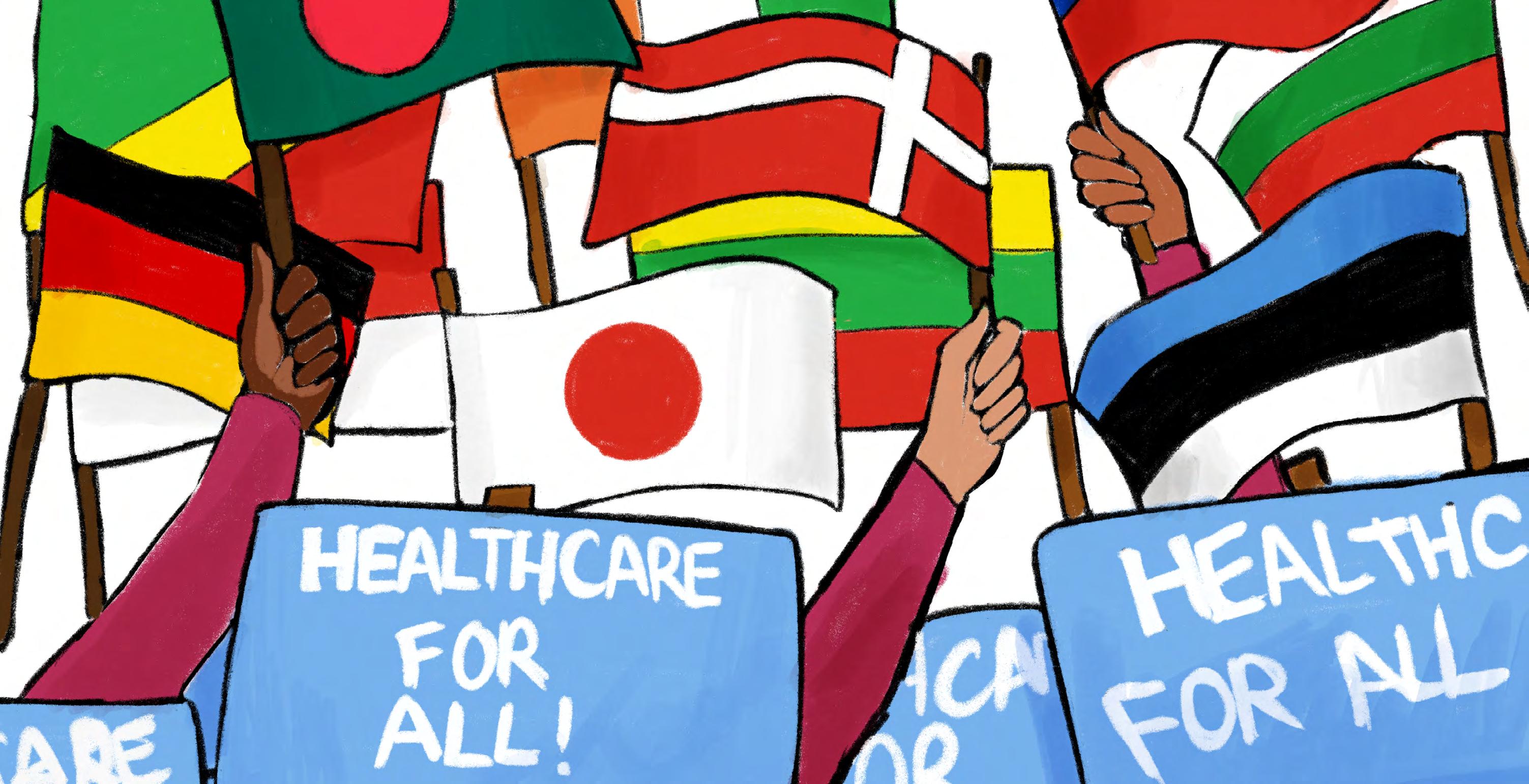
U
MSU led a rally at the Manitoba Legislative Assembly on Oct. 1, urging the provincial government to fulfill its campaign promise to reinstate healthcare coverage for international students. The rally coincided with the first day of the legislative session, a deliberate choice meant to capture the attention of lawmakers as they returned to work.
Prabhnoor Singh, president of UMSU, said, “we wanted to make our message loud and clear.” He added, “we’ve been lobbying the government for years on this issue, but we have yet to receive any concrete timeline for when healthcare coverage will be restored.”
The rally was directed at all members of the provincial legislature, reinforcing the union’s firm stance that healthcare is a fundamental human right. Singh empha-
sized that this right must extend to the international student community, who currently face significant financial and coverage barriers under the existing private plan.
“While the current provincial government made a campaign promise to reinstate healthcare for international students, no action has been taken so far,” Singh said. Throwing light on the current health coverage for international students, Singh explained, “currently, international students in Manitoba are covered under the Manitoba International Student Health Plan (MISHP),” a private insurance plan. UMSU argued that this system is insufficient, and that it often burdens students with “high premiums, limited
coverage and out-of-pocket expenses.”
When asked why the Legislative Assembly was chosen as the venue, Singh emphasized the jurisdictional responsibility. “Healthcare falls under provincial jurisdiction, which is why the Manitoba Legislative Assembly was chosen as the site of the rally,” he explained.
Despite the public demon-
us.”
The event saw strong participation not only from UMSU’s own community representatives but also from allied student associations, including the University of Winnipeg Students’ Association and Providence College.
“Access to affordable, publicly funded healthcare is a basic human right”
In the face of government silence, UMSU is preparing for a sustained advocacy campaign. The student union plans to maintain pressure on elected officials through multiple channels.
— Prabhnoor Singh, UMSU president
stration, according to Singh, UMSU has not received any formal assurances from the governing party.
However, he added, “Independent Liberal MLA Cindy Lamoureux did come out to show her support and took the time to speak with
“We will continue to lobby and rally at the Legislature, attend Question Periods, and organize students to keep the pressure on the government,” Singh stated. “Our goal remains clear: to ensure that ALL students have access to publicly funded healthcare.”
Concluding with a message
No place like home
SofA unveils latest art show featuring pieces musing on “home”
of solidarity, Singh directly addressed the university community. He affirmed UMSU’s support for international students, whose contributions are vital to the province’s academic and cultural landscape.
“To all international students and the broader university community, we want you to know that your health and well-being matter deeply to us,” Singh said. “Access to affordable, publicly funded healthcare is a basic human right.”
He encouraged students to stay engaged and join future advocacy efforts, asserting that collective action is the key to driving meaningful change and ensuring healthcare is accessible to everyone in Manitoba.
The preliminary fall enrolment report shows international student numbers have declined by 5.4 per cent compared to fall term 2024, marking the second consecutive year of decline at U of M.
First win for soccer
Bisons soccer team crushes too-slow Pandas on Saturday Sports 19
GRAPHIC BY EMMA GILLICH / STAFF
Roy Albright Obah, staff


109 HELEN GLASS BUILDING UNIVERSITY OF MANITOBA WINNIPEG, MB THEMANITOBAN.COM | 204. 474. 6535
GENERAL INQUIRIES: ME@THEMANITOBAN.COM
CIRCULATION INQUIRIES: MISSING OR INCOMPLETE PAPER? EMAIL: DISTRIBUTION@THEMANITOBAN.COM
EDITOR-IN-CHIEF Mikaela Warkentin editor@themanitoban.com
BUSINESS MANAGER Alice Teufack accounts@themanitoban.com
BUSINESS SUPPORT MANAGER Joshua Herold ads@themanitoban.com
EDITORIAL
MANAGING EDITOR Peace Ifeanyi me@themanitoban.com
COPY EDITOR Eden Quiring copy@themanitoban.com
NEWS EDITOR Jesse Brogan news@themanitoban.com
NEWS EDITOR Roy Albright Obah news@themanitoban.com
RESEARCH & TECHNOLOGY EDITOR Mansura Meghla research@themanitoban.com
COMMENT EDITOR Quinn Mayhew comment@themanitoban.com
ARTS & CULTURE EDITOR Boris Tsun Hang Leung arts@themanitoban.com
SPORTS EDITOR Abdul-Jalilu Ahmed sports@themanitoban.com
DESIGN
DESIGN EDITOR Deveney Jarrow design@themanitoban.com
GRAPHICS EDITOR Emma Gillich graphics@themanitoban.com
AUDIO AND VIDEO
AUDIO EDITOR Max Reid audio@themanitoban.com
PHOTO EDITOR Mike Thiessen photo@themanitoban.com
VIDEO EDITOR Zulkifl Rafah video@themanitoban.com
DIGITAL MEDIA EDITOR Faisal Rahman social@themanitoban.com
VOLUNTEER STAFF
VOLUNTEERS
interested in volunteering? email me@themanitoban.com today!

The Manitoban is the official student newspaper of the University of Manitoba. It is published monthly during the summer and each week of regular classes during the academic year by the Manitoban Newspaper Publications Corporation.
The Manitoban is an independent and democratic student organization, open to participation from all students. It exists to serve its readers as students and citizens.
The Manitoban is a member of the Canadian University Press, and our journalistic standards can be found on the Manitoban’s website.
The newspaper’s primary mandate is to report fairly and objectively on issues and events of importance and interest to the students of the University of Manitoba, to provide an open forum for the free expression and exchange of opinions and ideas and to stimulate meaningful debate on issues that affect or would otherwise be of interest to the student body and/ or society in general. The Manitoban serves as a training ground for students interested in any aspect of journalism.
Students and other interested parties are invited to contribute to any section of the newspaper. Please contact the appropriate editor for submission guidelines.
The Manitoban reserves the right to edit all submissions and will not publish any material deemed by its Editorial Board to be discriminatory, racist, sexist, homophobic or transphobic, ableist or libellous.
Opinions expressed in letters and articles are solely those of the authors. Editorials in the Manitoban are signed and represent the opinions of the writer(s), not necessarily those of the Manitoban staff, Editorial Board or the publisher.
A “volunteer staff” member is defined as a person who has had three volunteer articles, photographs or pieces of art of reasonable length and/ or substance published in the current publishing year of the Manitoban
Any individual who qualifies as a volunteer staff member must be voted in by a majority vote at a Manitoban editorial board meeting. Elected representatives and non-students may be excluded from holding votes as volunteer staff members in accordance with the Manitoban Constitution.
All contents are ©2025 and may not be reprinted without the express written permission of the Editor-in-Chief.





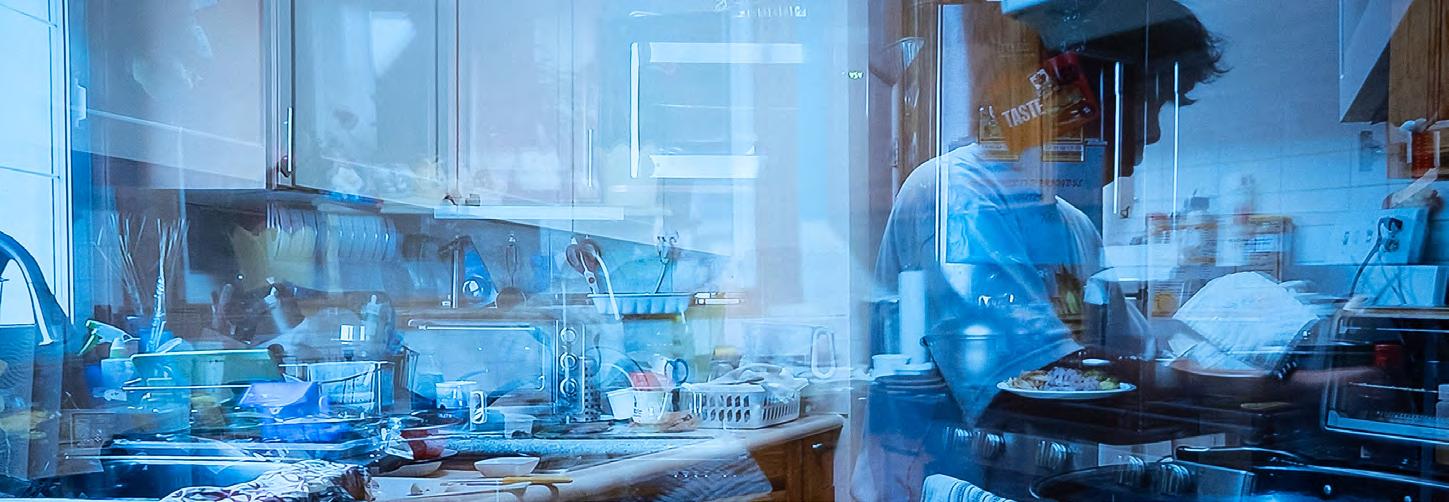
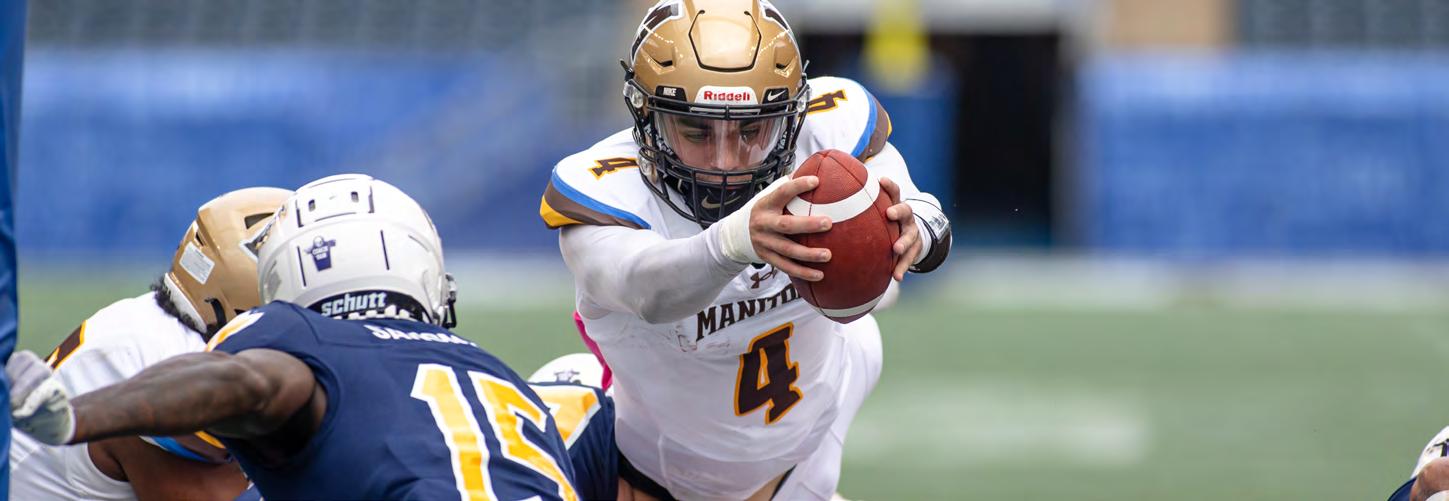
St. Paul’s College celebrates academic year
Chancellor’s investiture celebrates unity, excellence and new leadership
Roy Albright Obah, staff
The Christ the King Chapel at the U of M hosted faculty, students and families this year for the annual St. Paul’s College academic mass on Sunday, Sept. 28. The ceremony featured the Mass of the Holy Spirit, the opening of the academic exercise and the installation of a new chancellor.
The event serves as the formal opening of the academic year. Christopher Adams, the college rector, welcomed attendees and outlined the day’s purpose and schedule.
The liturgical mass was presided over by Most Reverend Murray Chatlain, eighth archbishop of Winnipeg, assisted by Fr. Mark Filips, the college’s priest chaplain.
In his homily, Archbishop Chatlain encouraged the congregation to embrace fasting, describing it as “one of the best medicines” that deepens faithfulness and generosity.
Installation of the chancellor
Following the liturgical mass, the investiture of the new chancellor proceeded. Rector Adams explained the appointment. “According to our college bylaws, it’s always the archbishop of Winnipeg who is our chancellor,” Adams stated. The chancellor serves as the figurehead of the college and performs oversight duties.
The installation ceremony included a smudging ceremony performed by Elder Norman Meade, a blend of faith, tradition and spirituality. Dorothy Scott, chair of the college’s board of governors, presented the Archbishop Chatlain to be installed as the chancellor of the college. The installation was carried out by the college rector who administered the oath of office.
In his acceptance speech, Archbishop Chatlain outlined his view of the position. He described his role as creating connections across the university. “I think that’s an important role […] that we work together for the future of the students that are coming,” Archbishop Chatlain said.
He also disclosed his readiness to support the community. “I would be committed to praying for the students,” he stated, adding, “Our catholic community will be here to support all of you.” The academic community expressed its support for Archbishop Chatlain with the words, “We will.”
Archbishop Chatlain also


spoke on the college’s role in serving students’ holistic needs. “I think that we’re made up [of] four parts — that we are physical, emotional, intellectual and spiritual, and so each of those parts [needs] to have a balance and a strengthening,” he said.
Archbishop Chatlain, appointed by Pope Francis as the eighth archbishop of Winnipeg, previously served as archbishop of Keewatin-Le Pas under Pope Benedict XVI.
The St. Paul’s College Students’ Association (SPCSA) was then presented before the priest chaplain for a blessing to lead the academic year.
Awards ceremony recognizes student achievement
The ceremony included an academic awards presentation. Dilantha Fernando, the college’s dean of studies, moderated the event and expressed gratitude to the donors providing financial support.
This year’s awards given
totalled $48,996. Nine students from four Winnipeg Catholic schools received entrance scholarships. Fernando explained, “Entrance scholarships are granted to students registering for the first time as full time students in the college and in the university.” Recipients are selected by their high school principals and teachers based on academic performance.
An additional 17 continuing students who are members of the college received scholarships.
Hans Alday, the senior stick of the SPCSA, received the Diane Dowling Memorial Scholarship. Alday shared that his continuous engagement in the college contributed to winning the award. “I first started out on the [SPCSA] as a photographer […] and then [became] the director of fundraising and now [I am the] senior stick,” he stated.
One awardee, Nathaniel Casiano, received two scholarships — the Ayotte Fund for the Study of Faith and the Environment Endow-
ment and the Diane Dowling Memorial Scholarship. He expressed gratitude for the financial relief. “It’s just very beautiful that there are donors that would be willing to donate to help students,” Casiano said. “These awards really help with paying for schooling.”
College membership and centennial
Fernando described this year’s event as “special” for him, given his years of service as a dean and being able to witness the first installation of a new chancellor.
The college is open to both Catholic and non-Catholic students at the U of M. Alday stated, “St. Paul’s College is very welcoming […] Any religion […] you are always welcome.”
Casiano shared how membership has “been a really great opportunity to connect with like minded people […] who share a lot of the same values.”
Adams encouraged stu-
dents to join for the dual benefits. “We call ourselves a smaller community in the big community. So, all of our students are [U of M] students, so they get the benefits of being in this very large university, [and] at the same time they get the added benefit of being at the college,” he said.
The college will celebrate its 100th anniversary in September 2026. Fernando stated, “We are going to have several events in relation to the centennial, and I look forward to many people coming to those events.”
Adams also encouraged students to cultivate the act of giving when “they go out and get a career.”
The ceremony concluded with a luncheon in Hanley Hall, providing an opportunity for attendees to connect.
Students who would like to become members of St. Paul’s College can find more information on their website umanitoba.ca/st-paulscollege/ or on Instagram @spc_college.
PHOTOS PROVIDED BY ST. PAUL’S COLLEGE
Province launches wildfire relief program
U of M professor urges province to focus on long-term resilience
Jesse Brogan, staff
M
anitoba has launched a wildfire Disaster Financial Assistance (DFA) program to help municipalities recover after what officials call the most severe wildfire season in the province’s history.
DFA is a program intended to be a last resort that provides help for uninsurable losses when a disaster disrupts essential services, damages infrastructure or causes widespread property or environmental harm. Assistance is aimed at meeting essential needs and restoring the function of essential items, and claimants share in the cost of recovery. Recovery needs generally include local authorities, occupied principal residences, farms, small businesses and not-for-profits.
—
wildfires or incurred significant costs hosting evacuees.
“This has been the most severe wildfire season in Manitoba’s history and our government is committed to supporting municipalities as they work to recover,” Naylor said. “Lives have been lost, families displaced and communities deeply affected. Our government stands with
resilience from communities across Manitoba,” Naylor said. “From opening their doors to evacuees to mobilizing emergency resources, these communities have shown what it means to care for one another. This program is one way we’re ensuring they’re not alone in the recovery process.”
“Climate change means that intensity and frequency of these disasters are going to be increased year by year”
Soodeh Saberian, U of M associate professor of economics
Manitobans during this difficult time and is committed to helping municipalities rebuild and recover.”
Minister of Transportation and Infrastructure Lisa Naylor said the province is committing support to municipalities that were directly impacted by
According to the province, DFA will help fund preemptive preparation efforts, emergency response operations, recovery and restoration activities, relief and recovery support and longterm wildfire-mitigation strategies.
“We’ve witnessed incredible acts of compassion and
Soodeh Saberian, an associate professor in the U of M’s economics department who studies how natural disasters and climate change shape public health and labour productivity, said her recent research tracks both direct and indirect pathways from wildfires to mental-health impacts. “What we found was surprising — that climate anxiety channel, the magnitude is as big as inhaling the smoke,” said Saberian. “We found evacuation almost doubles […] mental health hospitalization, which is kind of expected.”
“I think in the cost benefit analysis, it’s very important to take into account [the]

effect [on] mental health and also […] physical health that is chosen to be ignored,” said Saberian. “These effects that we found are long-lasting, and you don’t need to be directly affected [to face consequences in mental or physical health].”
“Climate change means that intensity and frequency of these disasters are going to be increased year by year,” Saberian said.
The province’s DFA program is intended to help municipalities recover immediate costs, and researchers like Saberian urge policymakers to assess low-risk and high-risk areas prone to wildfires and introduce a process to make it easier for firms and businesses to qualify. This way remote areas affected can be rebuilt and be more resilient.

PHOTO PROVIDED BY SOODEH SABERIAN / STAFF
‘Toban news briefs
Jesse Brogan, staff
New website memorializes MMIWG2S
Red Dress Stories MB is a new website that launched in Winnipeg on Saturday, the National Day of Action and Remembrance for MMIWG2S. The site features stories of over 400 missing and murdered Indigenous women, girls, two-spirit, and gender-diverse people in Manitoba. The site is developed by Giganawenimaanaanig, which is a group dedicated to developing laws and advocating for justice. The site includes an interactive map marking the locations of MMIWG2S. The platform aims to honour lives, support families and drive policy reform through data and advocacy.
AI’s looming effects on acting
Artificial intelligence (AI) poses a “huge threat” to actors and Hollywood, said Brenda Austin-Smith, a film studies professor at the U of M. She commented on the debut of Tilly Norwood, Hollywood’s first “AI-generated actor” created by Dutch producer Eline Van der Velden. Austin-Smith criticizes the venture, citing concerns over job risks and labelling Norwood a “bot” rather than an actor. “Time is going to tell,” said Austin-Smith, referring to AI’s impact on Manitoba’s film industry.
Black history tour Winnipeg
Winnipeg’s Exchange Met School has earned the Governor General’s History Award for Excellence in Teaching. Teachers Kathryn Laframboise and Jon McPhail guided students in creating In Flight: Our Black History Walk, highlighting overlooked landmarks tied to Black Canadians’ resilience. The project, held this past February, encouraged reflection on historical erasure and diverse narratives, with student-led tours exploring sites like Burton Cummings Theatre and archives on Winnipeg’s first all-Black baseball team.
Physicist responsible for big bang evidence dies at 80
George Smoot, Nobel Prize-winning physicist renowned for his role in capturing an image of the universe’s infancy, passed away on Sept. 18 at his Paris home at the age of 80 due to a heart attack. Smoot, a co-recipient of the 2006 Nobel Prize in Physics, led research on a NASA satellite, providing crucial evidence for the big bang theory. His work transformed cosmology and challenged our notions of the universe’s potential origins and structure.
Jewish community reflects and unites
On Sunday, approximately 2,000 members of Manitoba’s Jewish community gathered at the Asper Jewish Community Campus to mark the second anniversary of the Oct. 7, 2023 Hamas attack on Israel. Organized by the Jewish Federation of Winnipeg, the event featured a commemorative walk and prayers. Attendees expressed solidarity with Israeli victims, and reflected on resilience amid the ongoing conflict and the hope for peace.
U of M Sikh community mourns Devkarn Singh
The active member of campus student life tragically died last May
Mikaela Warkentin, staff
The U of M’s Sikh students’ association held an event honouring the life and legacy of Devkarn Singh on Saturday, Sept. 27. Singh died due to a drowning accident on May 4, 2025 at the Pinawa Dam Provincial Park, with RCMP recovering his body the following day. His loss is felt particularly deeply by the UMSikhSA, a student group which Singh had been a part of for two years. In a statement shared with the U of M, the student group expressed that “[Singh] was instrumental in organizing the first-ever Sikh Week at our university, a milestone that brought greater
awareness, unity, and pride to our Sikh identity.”
Hosting this memorial months after the loss of Singh has been a way for UMSikhSA to remember a friend and dedicated member of the Sikh community, UMSikhSA shared. “Devkarn Singh didn’t live an ordinary life” the student association shared in a statement made to the Manitoban. “It was one filled with compassion, humility and immense dedication toward his Sikh faith.” For the student group, it was an opportunity to “talk about the rich history and teachings he was inspired by, [and] what he taught others around him.”



PHOTO BY RAFAH ZULKIFL / STAFF
PHOTO PROVIDED BY UMSIKHSA
PHOTO OF DEVKARN SINGH PROVIDED BY UMSIKHSA
PHOTO BY RAFAH ZULKIFL / STAFF
The academy’s trilemma
The U of M’s complicity in genocide and the collapse of academic integrity
Jonathan Jenner
When actions betray the promises upon which they were spoken, as the consequences radiate outward, the speaker is left holding little but their own unseriousness. In academic pursuits, this unseriousness corrodes our intellectual mission, which requires integrity in the hard work of describing the world, imagining a world we want, and striving for a better one.
By its word, the U of M has professed a commitment to human rights and opposition to social harms in its investments. By its actions, the U of M has refused to divest from arms manufacturers who supply the tools of an ongoing genocide. While Palestinians in Gaza suffer the consequences of this global complicity, the university’s actions also indict our own institutional integrity. Here, now, our word is not our bond. So why would anyone take our intellectual mission seriously? We need to reckon not only with how we have impugned human rights, but with our own unseriousness and the damage it does to the academic integrity of our university.
The state of Israel is currently carrying out a genocide against Palestinians in Gaza. The United Nations Independent Commission, the International Association of Genocide Scholars, Amnesty International, Medicins Sans Frontieres, B’Tselem and the Lemkin Institute, among other international organizations describe Israel’s actions in Gaza as a genocide. Scholars share this assessment, including Rashid Khalidi, Omer Bartov, Raz Segal, Maung Zarni, Amos Godberg, Francesca Albanese, Reem Alsalem, Balakrishnan Rajagopal and many others.
Amid this genocide, the U of M’s endowment maintains equity investments in eight companies who continue to equip Israel with the tools of mass murder, despite repeated warnings about the human rights violations tied to these arms sales. These companies include Honeywell International, General Dynamics, Northrop Grumman, Lockheed Martin, RTX Corp, Check Point Software Technologies, Oshkosh Corp and Rolls-Royce Holdings. (All credit for this knowledge of the equity holdings of the University Endowment Trust goes to brave student activists from the U of M Gaza solidar-
ity encampment, who pushed the university to disclose its investments, which the university did in the Fall of 2024). General Dynamics, for example, profits as the manufacturer of the MK-84 2,000pound bomb, described by a Pentagon official as a weapon that “turns the earth to liquid,” “pancake[s] entire buildings” and causes “instant death” to anyone within 30 metres of its blast area. This munition has been used repeatedly in Gaza, where at least 70,000 tons of explosives have been dropped. For comparison, the nuclear bomb the U.S. dropped on Hiroshima in 1945 contained between 12,000 and 15,000 tons of explosives.
The MK-84 has been deployed in the Jabalia refugee camp and in the Al-Mawasi tent massacre, killing 40 people and leaving 10-metre craters where densely packed tents had sheltered forcibly displaced Palestinian families trying to sleep. Last fall, the U of M owned $5.38 million in stock in General Dynamics (they disclosed 0.515% of the University’s $1.045 billion endowment was invested in General Dynamics equities).
The estimated 13,096 shares of General Dynamics have each grown in monetary value by $163.33 between September 2023 and September 2025 (from $303.77 to $467.10), with dividends payments of $15.75 per share across that time (NB: these estimates draw from incomplete data and an assumption of constant holdings because the university has not made better data public — the actual numbers are likely to vary). As such, the value of the university’s holdings in General Dynamics has appreciated by $2.14 million during Israel’s genocide in Gaza, while also yielding $206,000 in dividend payments — a fiduciary return to our endowment’s coffers soaked in the blood of our Palestinian sisters and brothers
These holdings contradict the university’s own stated policies. The Responsible Investment Policy’s incorporation report outlines the university’s responsibility over the companies in which its endowment trust holds equities, requiring it to “assess and respond to material risks arising from Environmental, Social and Governance (ESG) considerations,” and to “act to mitigate or prevent the social and environmental harms arising from the practices of its investees.” This policy aligns with the university’s

commitment, in its five-year strategic plan (2024–29), to “work to dismantle all forms of oppression […] and uphold human rights,” as well as with the broader mission of the institution: “applying knowledge in partnership with diverse communities to promote the cultural, social and economic well-being of the people of Manitoba, Canada and the world.” How can these commitments mean anything if they do not include recognition of a currently unfolding genocide, and divestment from the companies that aid and abet it?
Last fall, a group of professors, students, staff and alumni drafted a resolution to divest from these eight companies and sought support from the university community. We took this resolution to the responsible parties for the university’s endowment, hoping to bring it before the Trust Investment Committee.
The administration blocked our effort, preventing a meeting. They informed us that “the university’s legal counsel has advised that divestment is only contemplated in two specific circumstances” in regards to the Responsible Investment Policy, namely, investments in fossil fuels and investments that harm the rights of Indigenous peoples of Canada. I agree that such investments merit divestment, but if our social and ethical responsibilities end there, we abdicate any sense of the word ‘responsibility’ that our university brandishes for its public image.
Instead of social responsibility, the university’s investment managers concerned themselves most with fiduciary responsibility. They argued that “even limited divestment can have a disproportionate impact on investment returns and, by extension, on the university’s ability to fulfill donor intentions and support scholarships, bursaries and other programs
that directly benefit students.”
To translate from legalese — the university maintains that our investments in the death machinery of General Dynamics and its ilk are simply too profitable to dissolve, and that the genocide underwriting this profitability does not even warrant consideration under the text of our Responsible Investment Policy.
Where does that leave our broader commitments to uphold human rights and to apply knowledge for social well-being? I have yet to hear a good answer from the administration about this, other than vague gestures toward the perennial hymn of inaction — “It’s complicated.” To me, this dereliction makes the U of M institutionally complicit in genocide, and we must reckon with the horror this complicity delivers daily to the people of Palestine. But we must also reckon deeply with how it damages our own integrity, and what that means for our academic mission.
I propose that universities now find themselves trapped in an academic trilemma, composed of three realities. First, we claim to apply knowledge for well-being, to dismantle all forms of oppression, to uphold human rights, and to use these commitments to structure our ethical responsibilities over institutional investments. Second, we currently hold investments in companies whose basis of profit is war and, in this case, genocide, denying life, safety, and dignity to the people of Palestine. Third, we as an academic community claim to take ideas seriously, to examine the world we live in, and to reflect critically on how we live in it.
These three realities simply cannot coexist, because the first two taken together preclude the third. We cannot hold investments that rob life from the world, claim simultaneously to uphold an ethical and socially responsible
investment posture and continue to insist that we take ideas seriously. Something must give.
As I see it, we have three choices. One option would be to abandon the idea that we have an ethical policy to guide our institutional wealth. That at least would have the merit of honesty, though it would be a moral disaster. Another option would be to abandon the notion that we take ideas seriously. This would mean that we lose our ability to earnestly engage the world, and would be equipped simply to buttress, but never challenge, the status quo. We would need to rebrand less as “lyceum” and more as “training institute for prairie capitalism.” In fact, I would suggest this is already our current, default position, and it is not the academy that any of us deserve.
But there is a third option — the one that I think we must pursue. We could take seriously, our ethical principles about where we park our wealth, including what kinds of partnerships we enter into, and use our intellectual faculties to evaluate and enact how we live in the world. That route has a name — divestment. And divestment pairs best with boycott and sanctions.
This third choice would bring challenges, and it would take moral courage. However, unless and until we take that path seriously, our unseriousness — about who we really are as universities, as academics, as intellectuals — will speak volumes, from the Canadian prairies to the killing fields in Palestine.
Jonathan Jenner is an assistant professor of economics and global political economy at the U of M, and a senior researcher at the South African Research Chair in Industrial Development (SARChI-ID) at the University of Johannesburg.
GRAPHIC BY EMMA GILLICH / STAFF



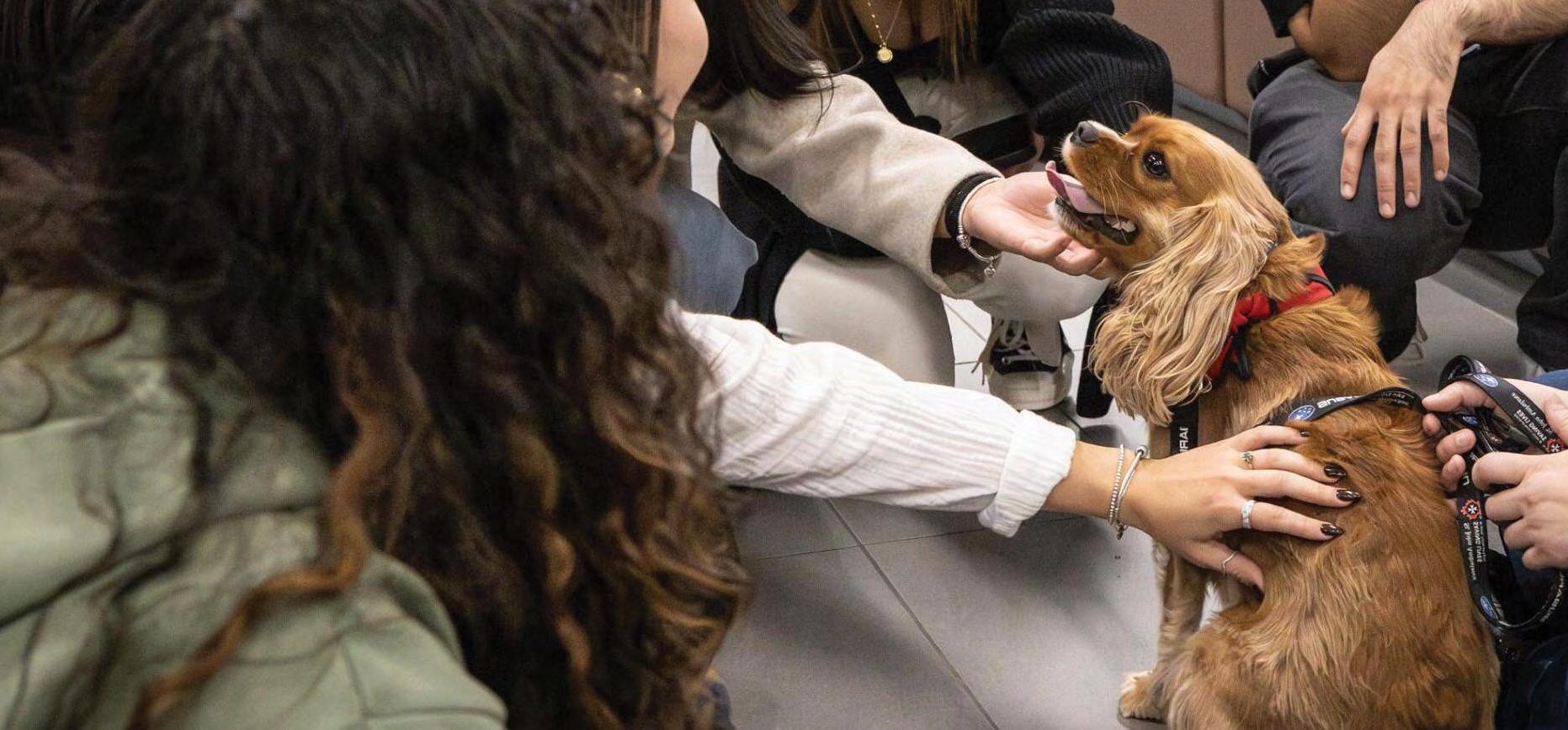





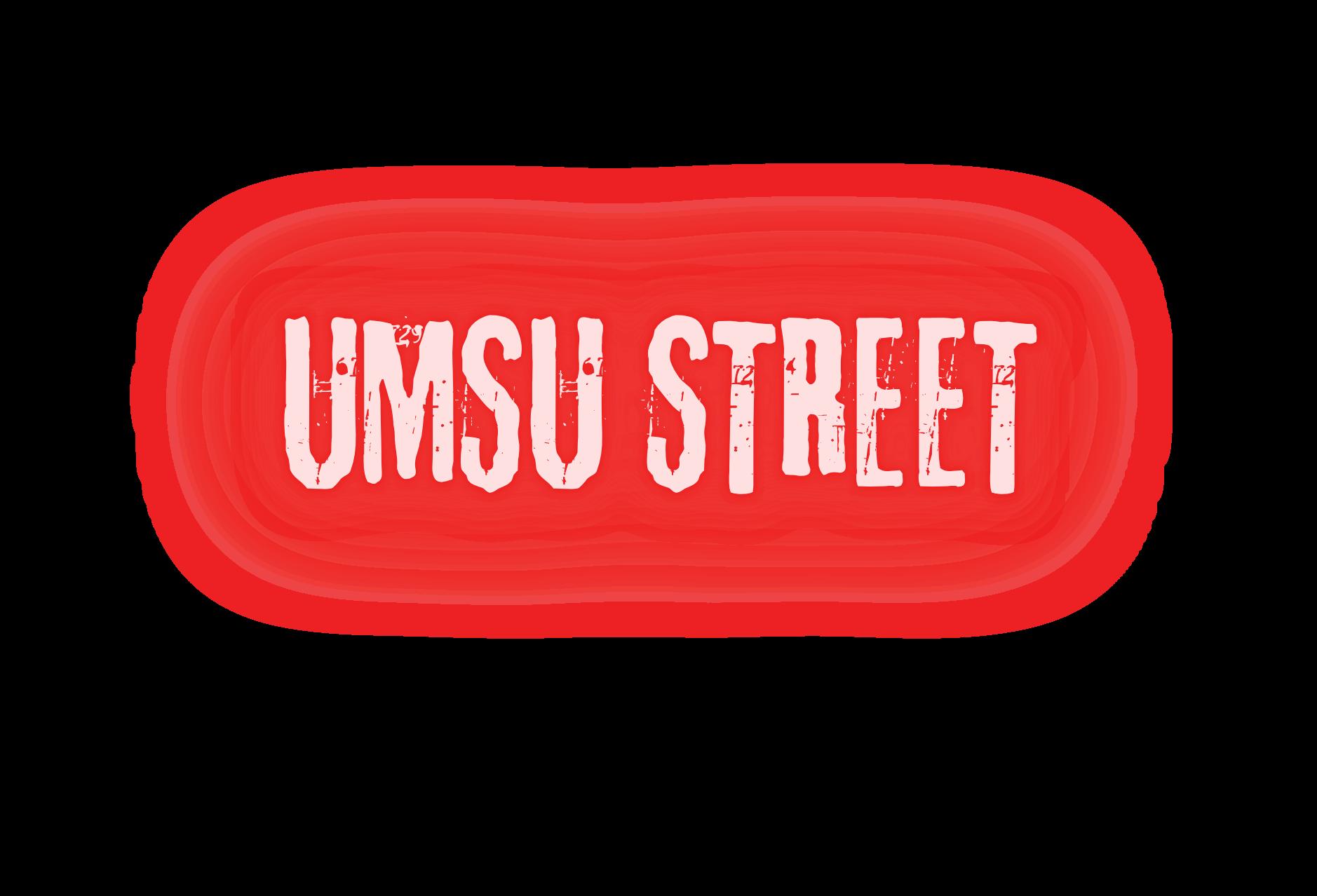

Research & Technology
A rare ecological treasure
Living Prairie Museum recognized as a Key Biodiversity Area
Mansura Akter Meghla, staff
The Living Prairie Museum (LPM) has been recognized as a Key Biodiversity Area (KBA), marking it as one of Canada’s most important sites for rare species and ecosystems. Zachary Moore, Manitoba KBA regional coordinator and a recent graduate from U of M’s natural resources management institute, said the LPM stood out as a strong candidate because of its rare species and ecological value.
“LPM is a great example of a remnant patch of tall grass prairie that is, amazingly, protected within city limits,” Moore said. Located at the heart of Winnipeg, the 13-hectare preserve protects one of Manitoba’s last largely unplowed tallgrass prairies. The KBA status is given as part of a national program that identifies essential places for biodiversity conservation.
populations of [downy gentian].” He also noted that less than half of the roughly 800 identified KBAs in Canada meet criteria for two or more species, making the LPM especially rare.
According to Moore, “[Downy gentian’s] occurrence in LPM was something truly special and worth highlighting on the national stage.”
The KBA designation now places the site alongside other key grassland ecosystems such as Grasslands National Park and Delta Marsh.
The prairie is home to more than 150 native plants and
“[Downy gentian’s] occurrence in LPM was something truly special and worth highlighting on the national stage”
— Zachary Moore, Manitoba KBA regional coordinator and a recent graduate from U of M’s natural resources management institute
Downy gentian (Gentiana puberulenta), a vivid blue-violet wildflower, is at the centre of the KBA recognition. Peter Soroye, KBA assessment and outreach coordinator at Wildlife Conservation Society Canada, said, “[LPM] is unique in that it holds one of only two known naturally occurring
over 300 different insect species, as well as birds and mammals. Among others, the site supports threatened insects such as the yellow-banded bumble bee and Whitney’s underwing moth, mammals like the white-tailed deer along with birds like indigo buntings, common nighthawks and rusty blackbirds.
While the KBA designation does not guarantee legal protection or funding, it serves
as a powerful tool for guiding conservation policy and funding decisions, including Canada’s goal to protect 30 per cent of land and water by 2030, explained Soroye. Noting that habitat loss remains the prairie’s biggest threat, he said, “Tools like KBAs help to highlight the sites that are absolutely critical to protect to avoid the extinction of iconic prairie species from the country or the world, and we should make sure that these sites are adequately conserved and stewarded into the future. Restoring degraded prairie ecosystems and sites is another key part of conserving and recovering biodiversity.”Soroye encouraged students and emerging researchers to get involved in KBA conservation through local non-governmental organizations, community science platforms like iNaturalist and national initiatives such as the KBA Canada photo contest.
“Our KBA Canada photo contest is open until Oct. 10, [2025],” he said. “KBAs can be great tools for inspiring Canadians across the country to care and learn about the incredible and unique biodiversity around them, and
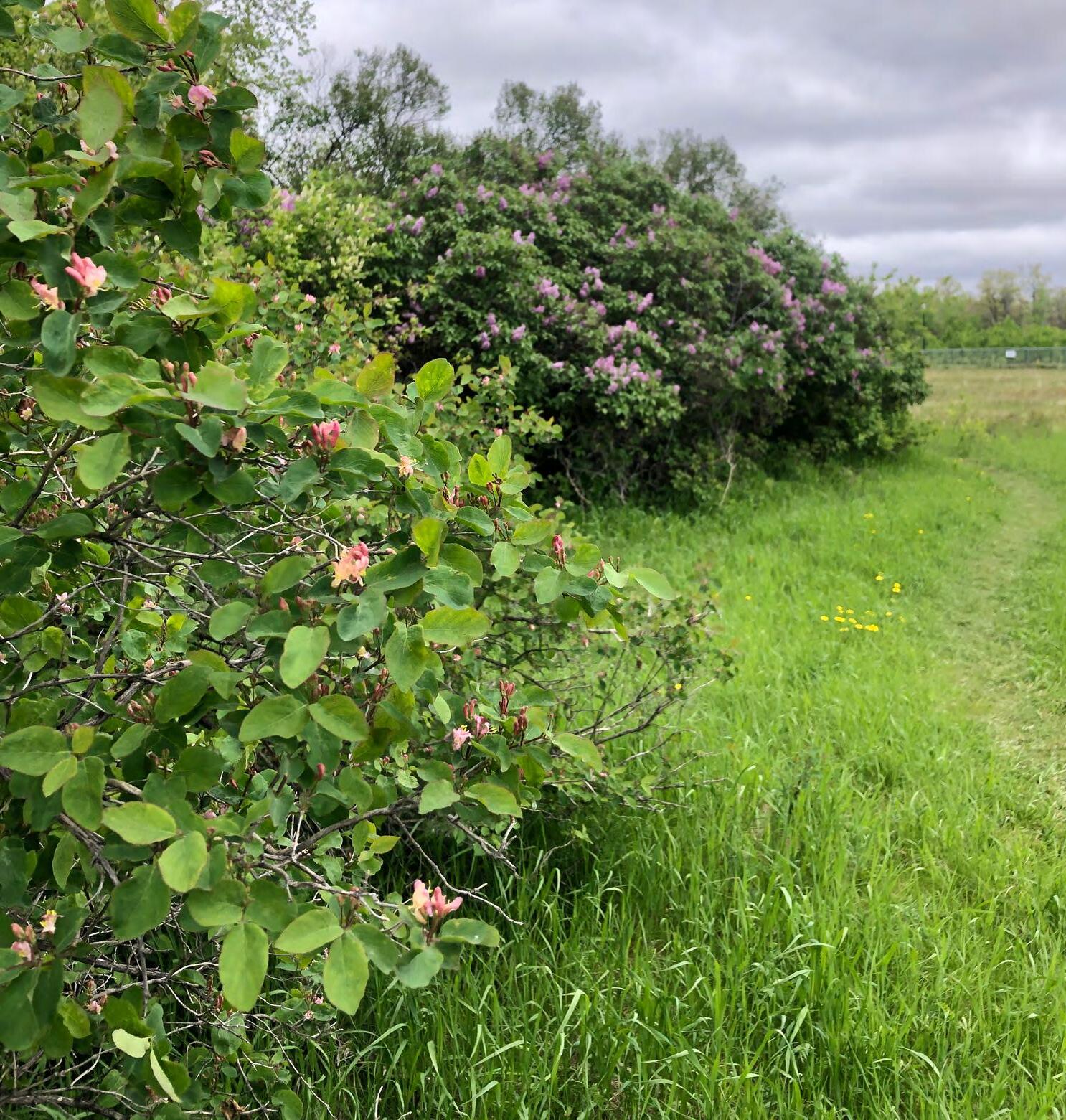

the photo contest is a great way for the photographically inclined to help shine a light on KBAs and the species within them,” he added.
The LPM lies within the home and traditional lands of the Anishinaabe (Ojibwe), Ininew (Cree) and Dakota peoples, and the homeland of the Red River Métis. Its recognition adds Winnipeg to Canada’s growing network of
KBAs, underscoring the ecological importance of even small urban patches of prairie. Launched in 2019, the KBA Canada initiative is among the world’s first national programs to identify Key Biodiversity Areas. It also supports Canada’s commitments under the Convention on Biological Diversity.

PHOTO PROVIDED BY ZACHARY MOORE
PHOTO BY DEVENEY JARROW / STAFF
PHOTO BY DEVENEY JARROW / STAFF
From 2G to 6G
Wireless telecoms researcher looks ahead to the next generation of connectivity
Mansura Akter Meghla, staff
Ekram Hossain has been
part of the U of M’s department of electrical and computer engineering since 2001. Now a professor and associate head for graduate studies, his research explores wireless telecommunications — the systems that make cell phones, Wi-Fi and satellite connections work.
“Wireless communications is one of the game changers,” he said. “These days, everybody has a cell phone [...] Nobody uses fixed phones anymore,” Hossain said. According to him, due to the growing popularity of wireless connection, thinking of any system without its presence is hard to imagine now.
Hossain’s career began after finishing a PhD at the University of Victoria. At the U of M, he has studied core problems in wireless, such as how to share limited spectrum, how to control interference between users and how to improve signal quality when transmissions bounce, scatter or fade in the air.
One of his current projects focuses on “programming the propagation environment” — shaping how signals move through space so
that they reach the receiver more clearly. His lab works on advanced
grating satellite internet, such as Starlink, with existing ter-
and more accessible for small communities.

antenna technology and reflective surfaces that can redirect and strengthen signals from a base station to a user’s device.
Another project looks at inte-
restrial systems to reach areas without reliable coverage. “If you go to [the] Arctic, and in the northern
part of Canada, [lack of reliable coverage persists]. The infrastructure is not there,” Hossain said. His team studies how low Earth orbit satellites can be combined with ground stations and relays to make connections cheaper
Hossain’s work also draws on other fields. He has applied optimization, game theory and even economics to questions like how telecom companies set prices or share infrastructure in remote regions. He said telecommunication companies “use theory from economics to model user behavior […] and they know how to charge, how to set the pricing so that they can make money out of it.”
Over his career, Hossain has seen wireless technologies grow from 2G to 5G, with 6G now on the horizon. Academic research often leads industry by about a decade, he explained, meaning ideas developed in academia during the 4G era are now being built into commercial 5G systems. His own publications have been cited over 51,000 times, and his lab’s work has led to several U.S. patents, with some being taken up by industry for practical use. Hossain said he feels fortunate to contribute significant knowledge that not only advances his own work but also supports the work of others. For him, the future of wireless goes far beyond phones — from streaming and virtual reality to the “metaverse.”

GRAPHIC BY EMMA GILLICH / STAFF
Why fitness matters
Staying active is important for a sound mind and body
Abdul-Jalilu Ahmed, staff
In today’s fast-moving world where technology does almost everything for us, it’s easy to overlook the importance of fitness. From dawn until dusk, people sit at their computer desks, scroll on their phones and spend evenings watching television. But behind the comforts of modern life lies a concern — the declining interest in fitness when it is more important than ever.
Fitness does not have to mean spending hours at the gym or lifting heavy weights. It simply means keeping your body active by engaging in regular activities such as walking, stretching, running or playing a sport. The goal of fitness is to move your body regularly and keep it active. When people practice fitness daily, they do not just change how they look, they adjust how they feel and live.
One of the benefits of regular fitness is improved health. Staying active helps reduce the risk of disease, and some health experts have advised that even 30 minutes of walking per day can make a big difference for your health. Exercise also helps strengthen the heart, lungs and muscles, and improves blood circulation while boosting your immune system.
In addition, Fitness plays an important role in taking care of your mental health. In times of stress, anxiety or sadness, a good workout can bring relief.
Another reason to practice fitness is for better energy and focus. People who exercise regularly often find they have more energy throughout the day, their minds stay sharper, they sleep better at night and they can handle work or school tasks more effectively. For children and young adults, fitness helps with brain development and learning. For older adults, fitness helps maintain body bal-
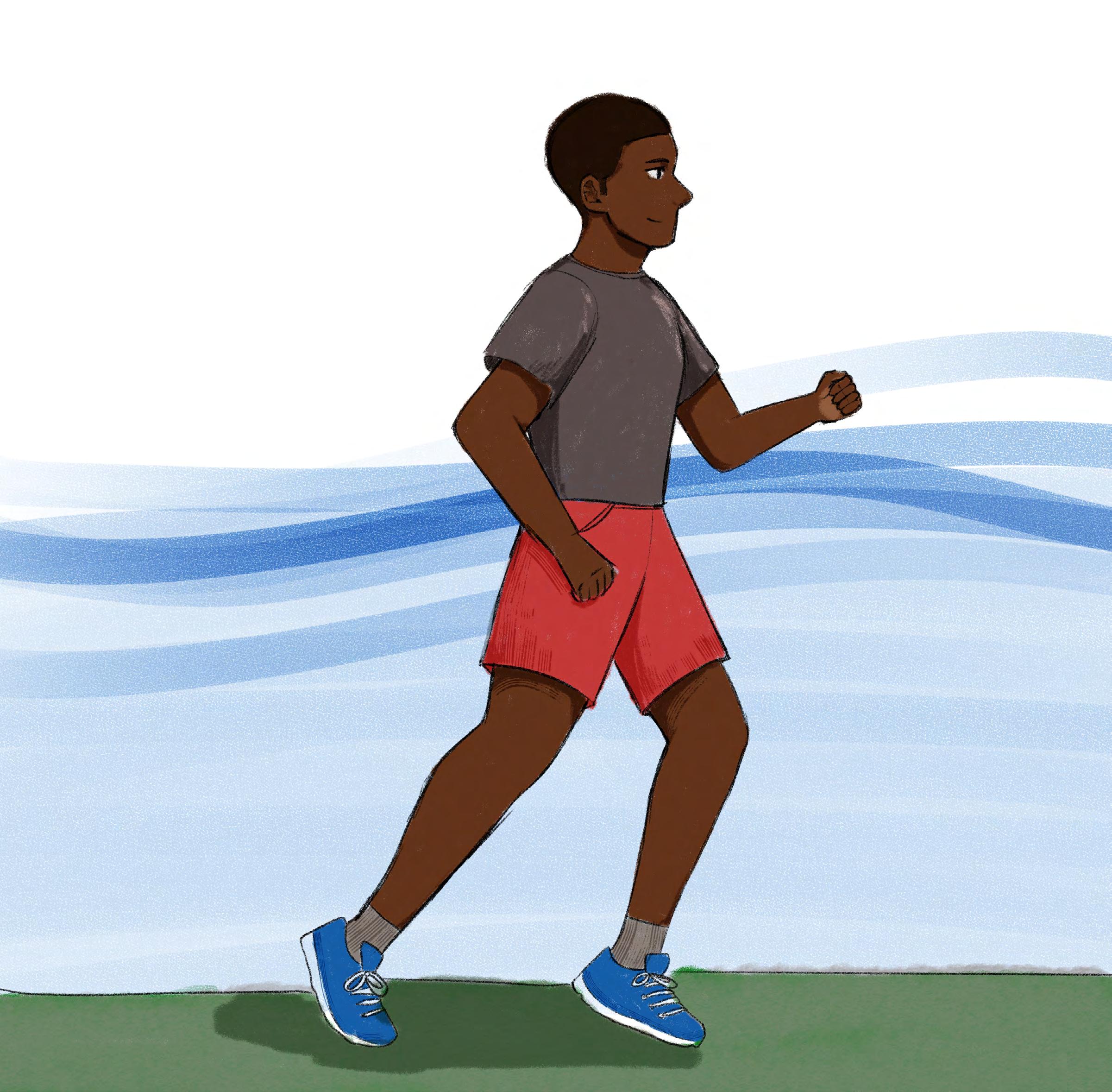
ance and lowers the risk of potentially dangerous falls.
Practicing fitness also builds discipline and self-confidence. Setting small goals, like jogging three times a week or learning a new sport, teaches commitment, and reaching those goals gives a sense of achievement. Over time, this creates a positive
mindset that can help in other areas of life, from your career to your relationships.
More so, fitness builds community. Group workouts, team sports or even a neighbourhood walk can bring people together. Group fitness encourages support, friendship and motivation. From casual conversations during
gym sessions to shared jogs through the neighbourhood, a sense of community is built over time. People do not have to become athletes to stay fit, all that an active lifestyle requires are small, consistent choices. Take the stairs, ride a bike or stretch in the morning — every little choice helps your mind and body. Fitness
is not about being perfect, but rather being active and consistent.
Due to the modern world’s busy schedules, sedentary lifestyles and screen time, fitness is not a luxury, but an effort that must be made a priority. For a healthier life, let’s make the time to move. Fitness is good.

GRAPHIC BY EMMA GILLICH / STAFF


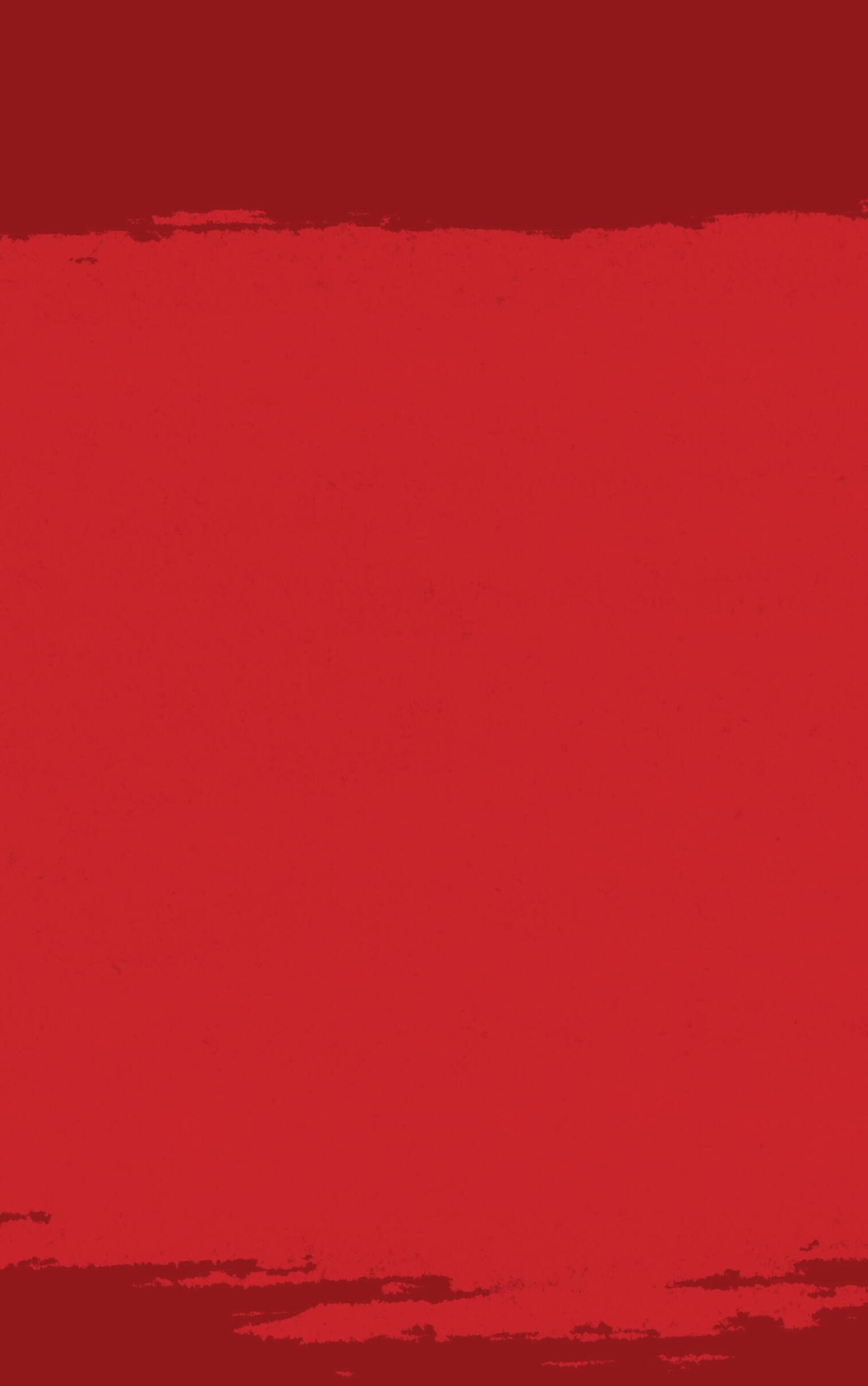













Comment
Éire go brách
Speaking Gaelic means more than reclaiming a language
Quinn Mayhew, staff
Is é an bealach is faide timpeall an bealach is goire abhaile — translated from Gaelic, this quote means, “It’s often the longer, more deliberate route that delivers a quicker result.” My Irish grandmother would often say a sentence similar to this quote, reminding me never to take the easier path. I never knew what she meant by that back then, but I think I’m starting to understand the quote more as I grow.
My maternal grandmother was a no-nonsense kind of woman. She rarely spoke about our Irish heritage, and if she did, it was often because something had slipped out by accident. I always wondered if that was because she felt disconnected from our language.
You may ask why Irish people don’t speak Irish (Gaelic), and it’s not so simple to explain. One could say it is an effect of colonization by the English, and it is, it is because of the English banning our language and trying to remove the Irish identity from Ireland.
“Conas atá tú?” my great aunt would often ask me, meaning, “how are you?” Whenever she would pose this question to me, I was always reminded that I could never answer back in my own lan-
guage, that I had been denied the right to learn my own language due to centuries of colonial oppression.
I was never intentionally taught the Irish language by my grandmother, she sadly passed away before she could teach any of our family any of the language. However, I would like to think that I am now honouring her by learning the language.
I recently picked up Gaelic after returning from my trip to Ireland where I noticed an abundance of Irish speakers all speaking Gaelic to one another, with a clear distinguishing factor among them — they were all young.
Young people in Ireland have decided to reclaim their language, integrating it into music, conversation and art, and now it is seeping out to the rest of the world to people like me who have been wanting for a while to reconnect to their Irish roots.
I’d like to think my grandmother would be proud of me for picking up the torch and continuing the use of Gaelic within our family. I hope that whoever reads this article takes away the idea that Irish is more than just a language — it’s the reclaiming of identity for Irish citizens and for individuals with Irish heritage.


GRAPHIC BY EMMA GILLICH / STAFF
Roommates and reality
Why learning communication matters before leaving home
Quinn Mayhew, staff
Although I have never had roommates myself, I feel like I have lived through several lifetimes of having to deal with housemate situations through my friends’ experiences.
I believe that roommates are sometimes necessary, whether it’s for reasons of cost, location or wanting to live with your friends. I agree that any of those reasons is a justification to have roommates.
Having housemates can be a good thing, but that good
thing could quickly go sour for a multitude of reasons.
Throughout my life, many of my friends have found themselves living in precarious flatmate situations.
I recently went over to a friend’s house where I witnessed her housemate throwing her belongings out of her second-storey window.
One may ask what happened, and I can honestly say that it was over a Gatorade that my friend probably should not have drunk.
Now, I know every housemate’s situation is different,
but I feel as though there is always a certain give and take to having roommates, which not everyone may acknowledge.
Sometimes, having roommates is romanticized in shows like Friends, but in reality it is rarely so easy. The reality is, you may not want to be roommates with your best friend, and sometimes it’s better not to be, because living together can strain even the strongest friendships when personal habits, boundaries or lifestyles clash.
One thing that I think every-
one should know before moving out and getting a roommate is that communication is key. Having an open space to communicate is always essential to maintaining a pleasant household with your housemates. If you refuse to communicate, they may not know that what they’re doing could be bothersome at times.
If you are a person reading this article who has roommates, please believe me when I say it’s important to establish boundaries early on when living with someone. I just recently had a friend
describe to me that when living with their roommate, they would often take my friend’s car without asking and then leave it in undisclosed locations across the city of Winnipeg.
Roommates are sometimes an essential part of life. You may not always be able to live by yourself and that’s okay. Living with roommates can be a great experience. My only piece of advice is to make sure you set boundaries early on to avoid problems down the line.
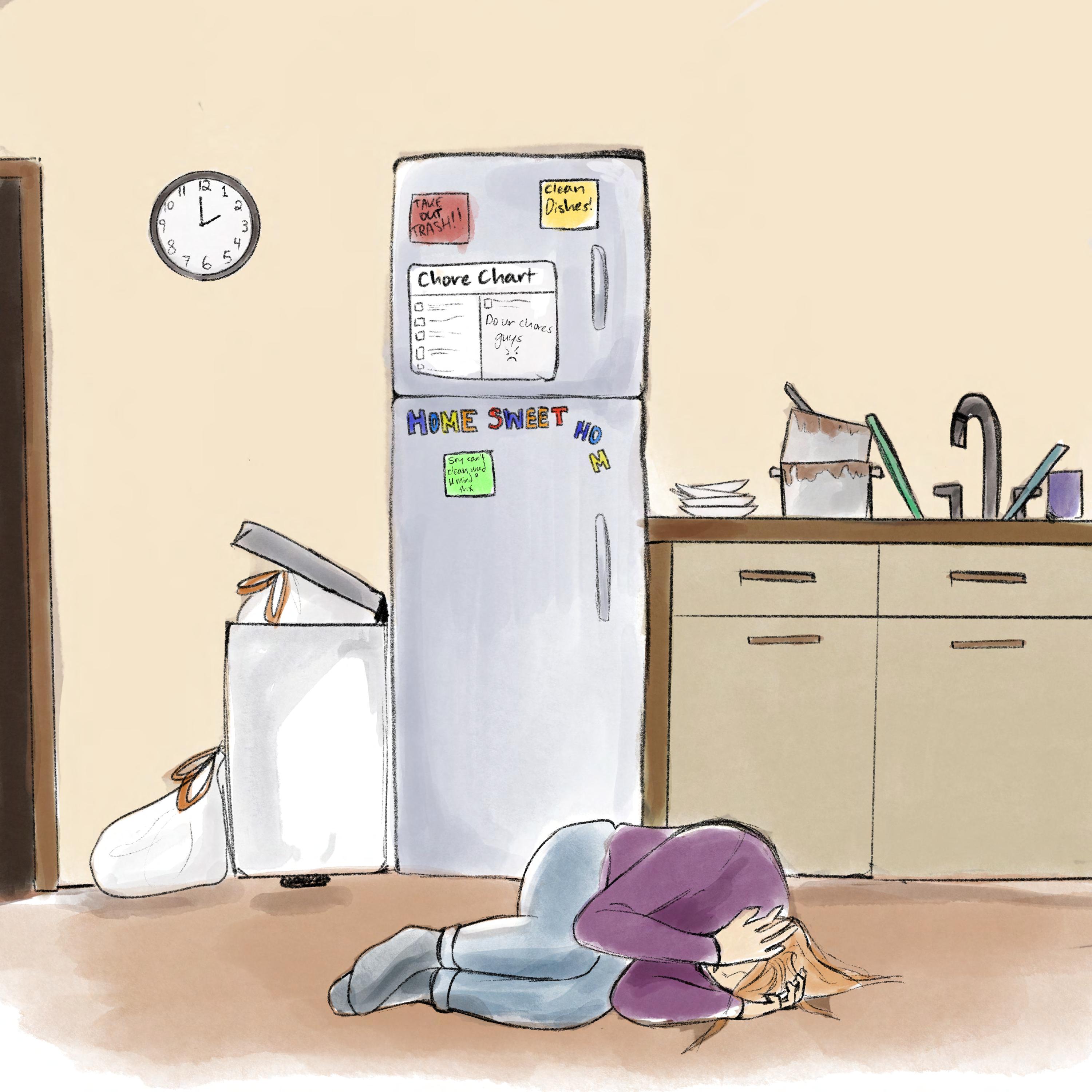
GRAPHIC
Arts & Culture
Getting to know U of M’s fall writer-in-residence
Exploring poetry and climate activism with Melanie Dennis Unrau
Boris Tsun Hang Leung, staff
The U of M Centre for Creative Writing and Oral Culture has recently welcomed Melanie Dennis Unrau as its writer-in-residence for fall 2025. A poet, scholar and climate activist, Unrau explores the unique intersections of the environment and literature.
As the writer-in-residence, Unrau is available to meet with students, staff, faculty and community members who want to discuss their writing. In addition, she hosts workshops on campus with activities ranging from poster-making for rallies to writing poetry.
“I’d like to invite as many people as possible to come up to the workshops. You don’t have to sign up in advance [or] attend all of them,” Unrau said. She added in each series, there will be one workshop where participants may bring a poem of their own to be workshopped and added to a chapbook. The chapbook will be launched on Dec. 6 at an event where participants can read their poems aloud.
Aside from workshopping, Unrau’s other duty is to write. Currently, she is writing a chapbook related to Goose, her latest poetry book launching on Oct. 11 at McNally Robinson Booksellers. In Goose, Unrau examines literary works about the Athabasca region, extraction and the relationship between humans and the environment.
Unrau is a U of M alumna who completed a PhD in oil worker poetry at the department of english, film, theatre and media. She has worked as a postdoctoral researcher at Columbia University and the University of Regina since 2019, though her career has recently taken a more artistic
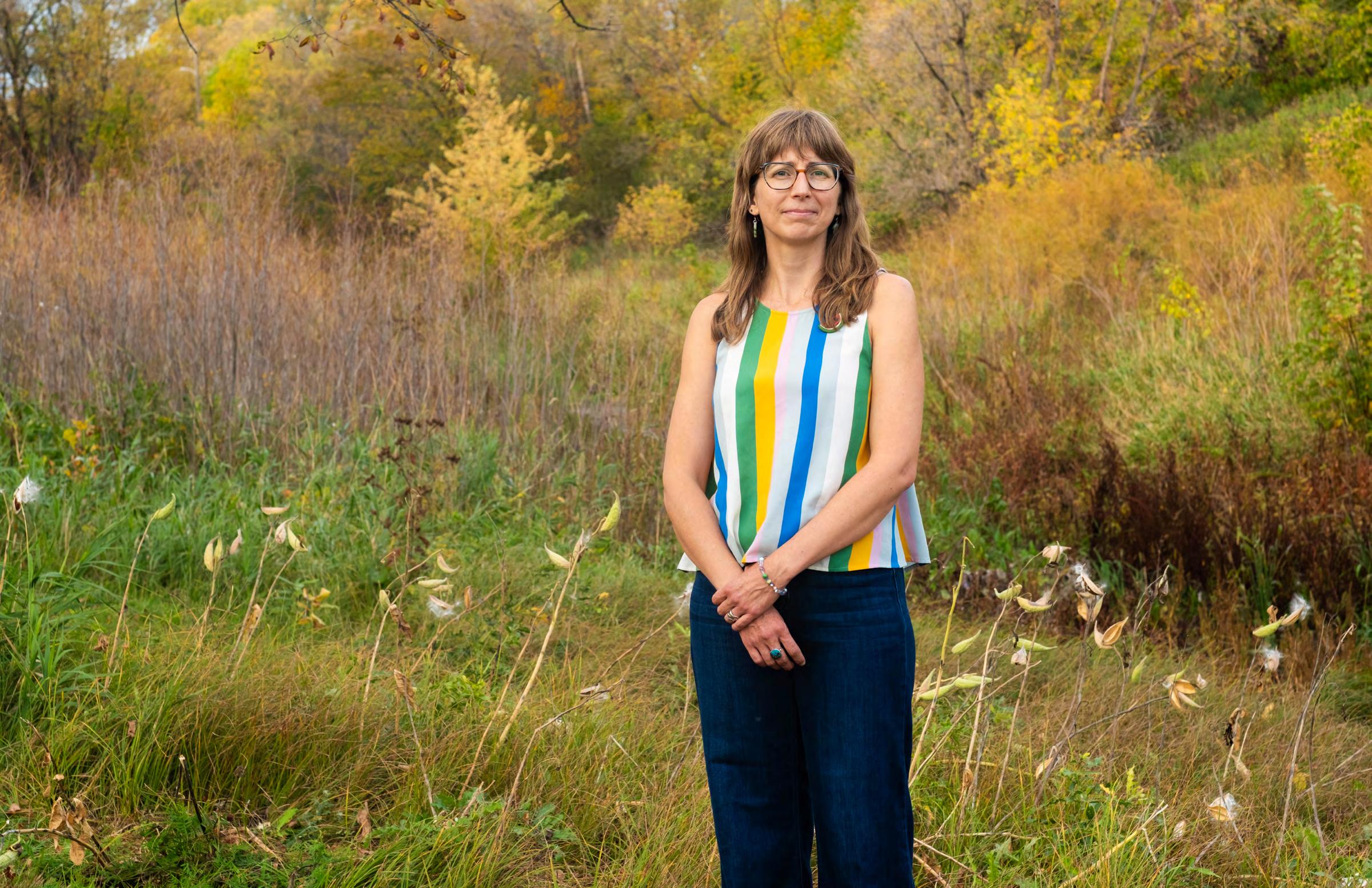
turn.
“I’m transitioning toward focusing on my creative practice and moving away from the career path of being a professor in a university, so I’m excited this fall to be a writer-in-residence at the university,” said Unrau.
Poetry can be a catalyst for empowerment and social change — think about “Still I Rise” by Maya Angelou or Langston Hughes’ “Kids Who Die,” for example. However, Unrau mentioned the value of poetry in activism might not be what
is expected.
“I had a [professor], Jeff Derksen at Simon Fraser University, who said we can’t essentialize about poetry, by which I think he meant we can’t make all these huge claims about what poetry can
ism, but I do think that poetry is a way that we can connect with other people, a way that we can express emotions and put into language ideas that are forming but not yet totally clear in our minds.”
“I don’t really think poetry in itself is an action if we want to talk about political activism, but I do think that poetry is a way that we can connect with other people”
For instance, Unrau’s doctoral dissertation has since been published as a book, The Rough Poets: Reading OilWorker Poetry
— Melanie Dennis Unrau, U of M writer-in-residence
do,” she said.
“I don’t really think poetry in itself is an action if we want to talk about political activ-
“The Rough Poets is sort of thinking about what environmentalists and oil workers have in common and how we might connect, and that poetry might
be a place for connecting even around some of these big culture wars topics that have become so divisive,” said Unrau.
“I see poetry as a mode for solidarity, a way of coming together in a really difficult time and looking for ways to live together,” she said. “I’m interested in social justice and wanting to use language and poetry to articulate visions for a more just world.”
Melanie Dennis Unrau can be reached at ccwocwir@ umanitoba.ca for consultations. For future workshops and events at the Centre for Creative Writing and Oral Culture, visit umanitoba.ca/arts/ centre-creative-writing-andoral-culture.

PHOTO BY MIKE THIESSEN / STAFF
MELANIE DENNIS UNRAU, FALL 2025 WRITER-IN-RESIDENCE AT THE U OF M.
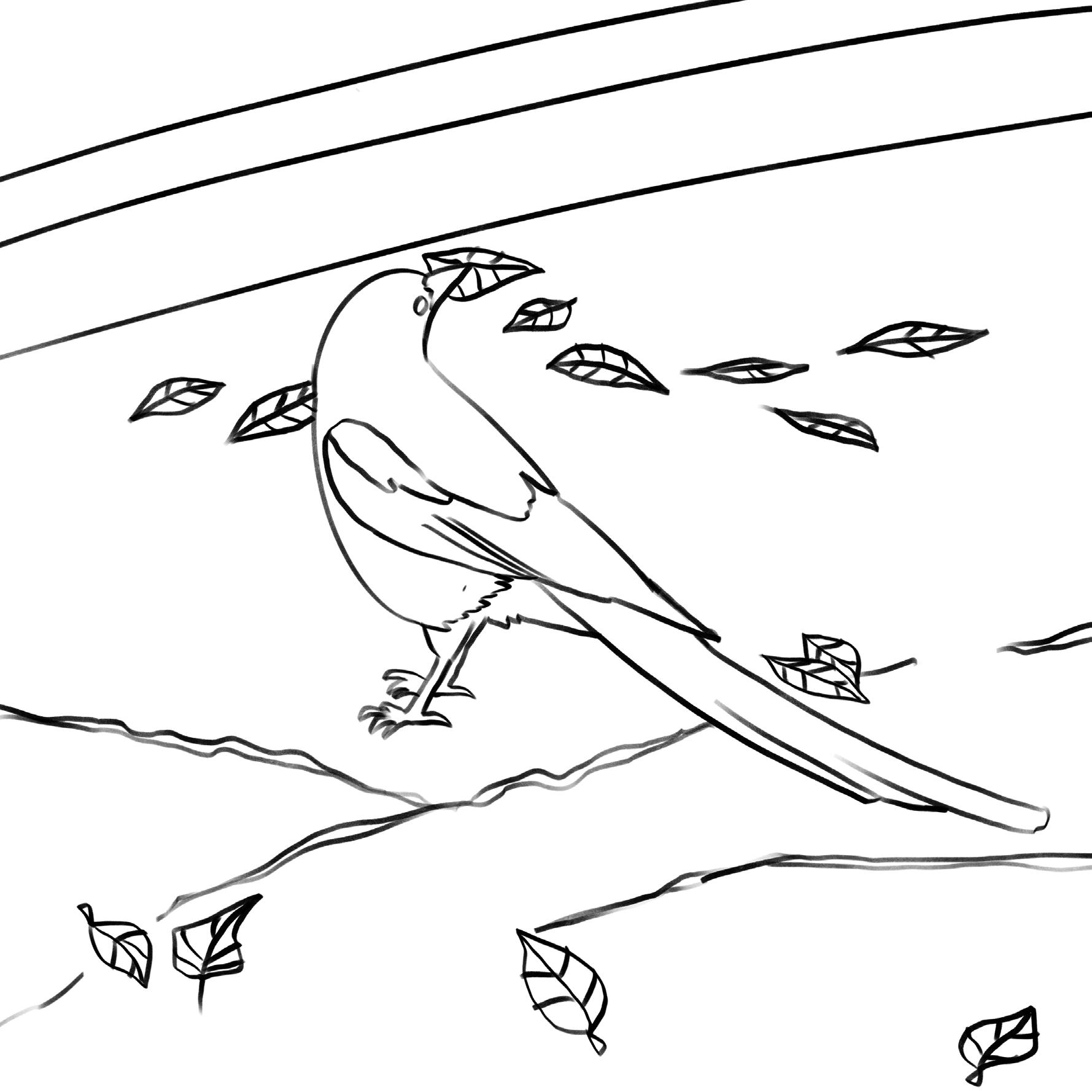

To complete Sudoku, fill the board by entering numbers 1 to 9 such that each row, column, and 3x3 box contains every number uniquely. In Straights, like Sudoku, no single number 1 to 9 can repeat in any row or column. But rows and columns are divided by black squares into compartments. Each compartment must form a “straight.” A straight is a set of numbers with no gaps but it can be in any order, eg [7,6,9,8]. Clues in black cells remove that number as an option in that row and column, and are not part of any straight. Glance at the solution to see how “straights” are formed.

U of M students present From Under the Couch
An art exhibition on the intimacies and familiarities of home
Boris Tsun Hang Leung, staff
he School of Art Stu-
T
dent Gallery unveiled its latest exhibition, From Under the Couch, on Oct. 3. This eclectic collection of artwork by 19 U of M students touches on the feelings that home evokes, from familiarity to longing.
For the exhibition, students were asked to create works as if they were excavating the hidden crevices of their homes’ couch cushions. Pamela Baptista, for example, made “Specters of a Kitchen,” a screen that plays overlayed footage of a domestic kitchen while flanked by weathered shopping lists and photographs.
Others explored the theme more metaphorically — Mirée Maguet created a charcoal drawing of a couple embracing. Perhaps home can also be the person one finds comfort and solace in.
Bisan Dasuki, a third-year student at the school of art and another artist featured in the exhibition, explained the concept and meaning behind her piece, “Box of Belonging.”
“My artwork was about Palestine, because that’s where I’m from. It’s the one with the whole Palestine map, and it’s made out of wood, and it’s like a box. And outside of the box is a watermelon, and when you open it, you have the original names of the cities before they were occupied,” explained Dasuki.
“There’s also another artwork that I have [on display], and it’s supposed to represent one of the massacres that happened in Gaza. It’s called ‘The Massacre Blooms,’ and [the massacre] happened while people [were] trying to get
food and aid and Israel basically [struck] a bomb on them.”
Echoing the exhibition’s theme, Dasuki hoped that the artwork on her home can bring consolation or familiarity to viewers while also sparking conversations.
“I’m hoping that my artwork brings comfort for the people who are affected by this, and Palestinians specifically, and [I hope] to make people question what is happening and talk about it and educate themselves on it.”
From Under the Couch is located in 158 Taché Arts Complex on campus and is open from 9 a.m. to 4:30 p.m on weekdays. The exhibition will conclude on Oct. 9.


PHOTOS

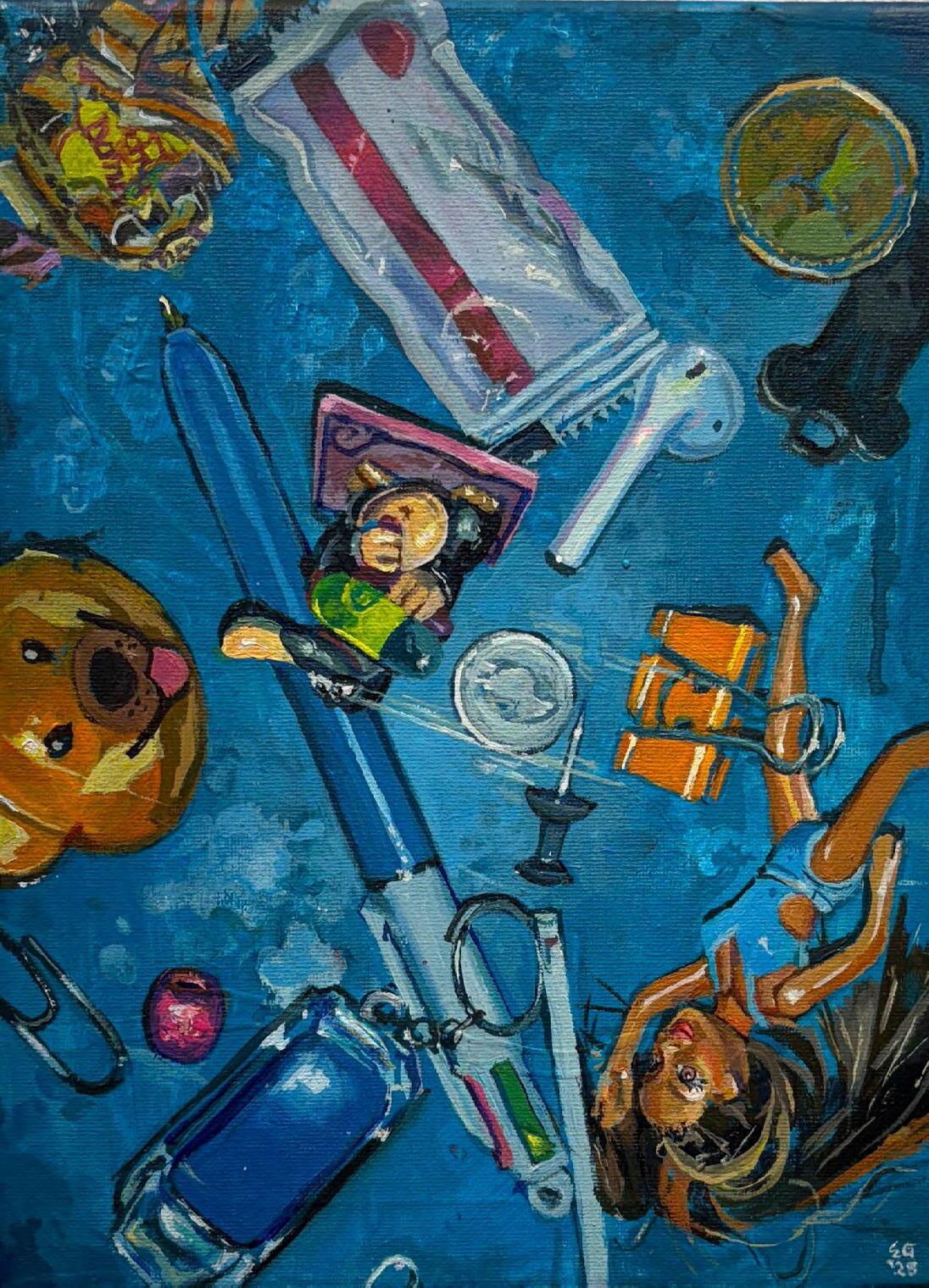

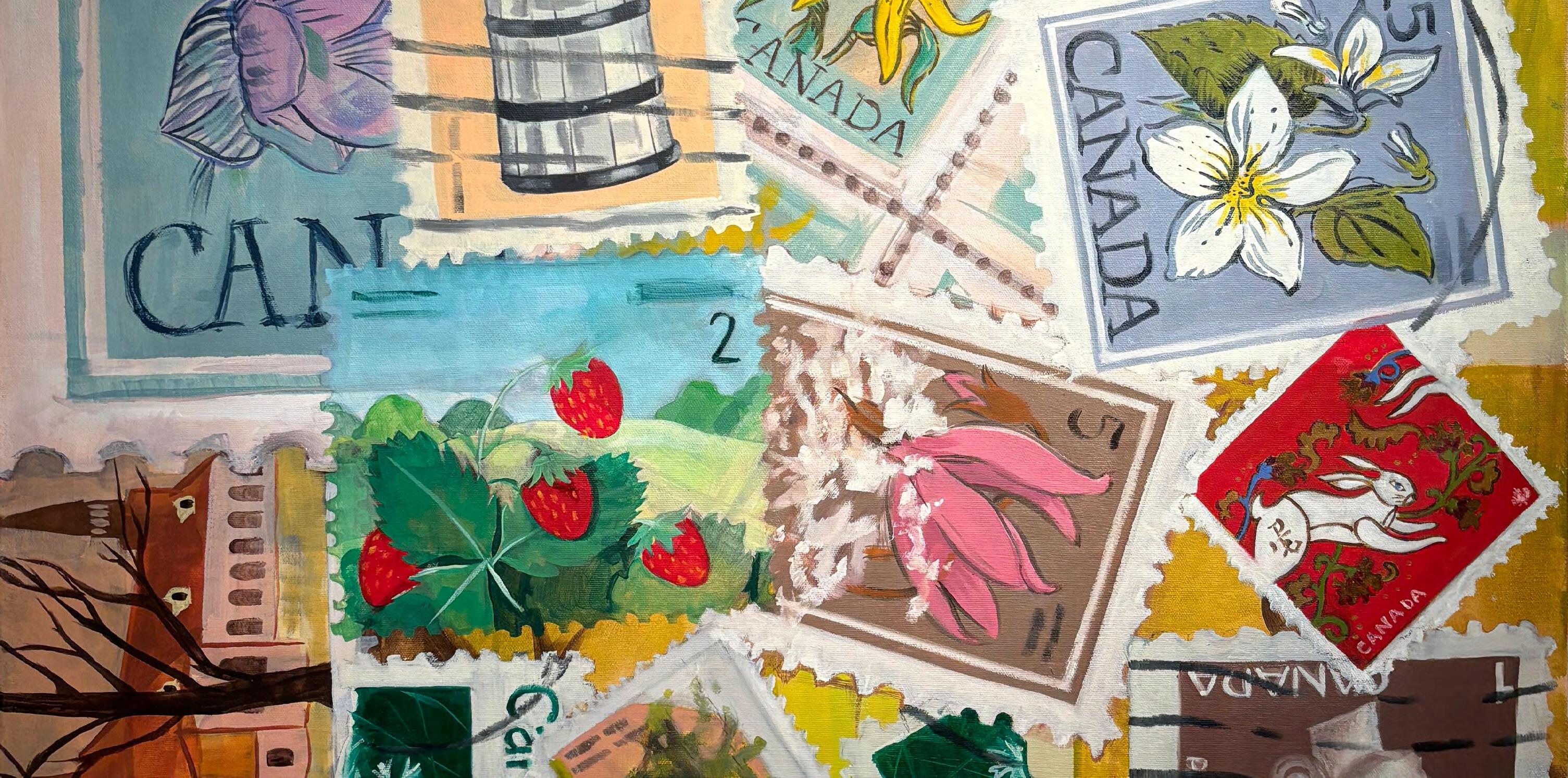
PHOTOS


First win of the season for Bisons soccer team
Bisons beat Alberta Pandas 1-0 away to claim victory
Abdul-Jalilu Ahmed, staff
The Bisons soccer team recorded their first win of the season with a 1-0 victory over the University of Alberta Pandas on Saturday, Oct. 4.
The game opened with early pressure from the Pandas. In the 9th minute [9:04], Tara Simonot provided a shot on goal, but Bisons goalie Holly Dyker made a save.
The Bisons responded with chances of their own. Taylor Sousa tested Pandas goalie Autumn Wynn in the 22nd minute [22:38], followed by an attempt from Chloe Morin in the 23rd minute [23:01]. Both shots were saved.
The opening goal came in the 30th minute [30:18] when Lulu Bordeaux scored her first goal of the season, with an assist from Morin, to give the Bisons a 1-0 lead.
The Pandas pushed for an equalizer late in the first half, with shots from Makenna Van der Veen and Kelli Haffie, but the Bisons held strong heading into halftime.
In the second half, Sarina Mann delivered a shot for the Bisons in the 60th minute [60:38], but it was saved by Wynn. Mann followed it up with another shot in the 61st minute [61:14] but it went wide.
In the 90th minute [90:00], Bisons’ Bianca Cavalcanti and Isabella Lone had their shots going wide.
The Bisons held on for a 1-0 victory against the Pandas.
The Bisons soccer team drew 1-1 with the Pandas in their second game on Sunday, Oct. 5.
The Bisons came out strong early in the first half, registering several shots on target between the 6th and 11th
minutes [6:02 to 11:19], but the Pandas goalie Wynn made saves to keep the game level.
The Pandas delivered shots in the closing stages of the half, eventually scoring a goal in the 45th minute [45:00] when Clara Seck found the back of the net to give them a 1-0 lead at the break.
The Bisons equalized in the 56th minute [56:15] through Mann, assisted by Cavalcanti. Mia Fonseca fired a shot in the 90th minute [90:00] for the Bisons, but it went wide right, leaving the final score at 1-1.
In Prairie League standings, the Bisons have five points,
with one win, two draws and nine losses.
The Bisons soccer team will host the Lethbridge Pronghorns on Saturday, Oct. 18, 11 a.m. CT, at the East Turf Field and Sunday, Oct. 19, 12 p.m. CT, at the Princess Auto Stadium.
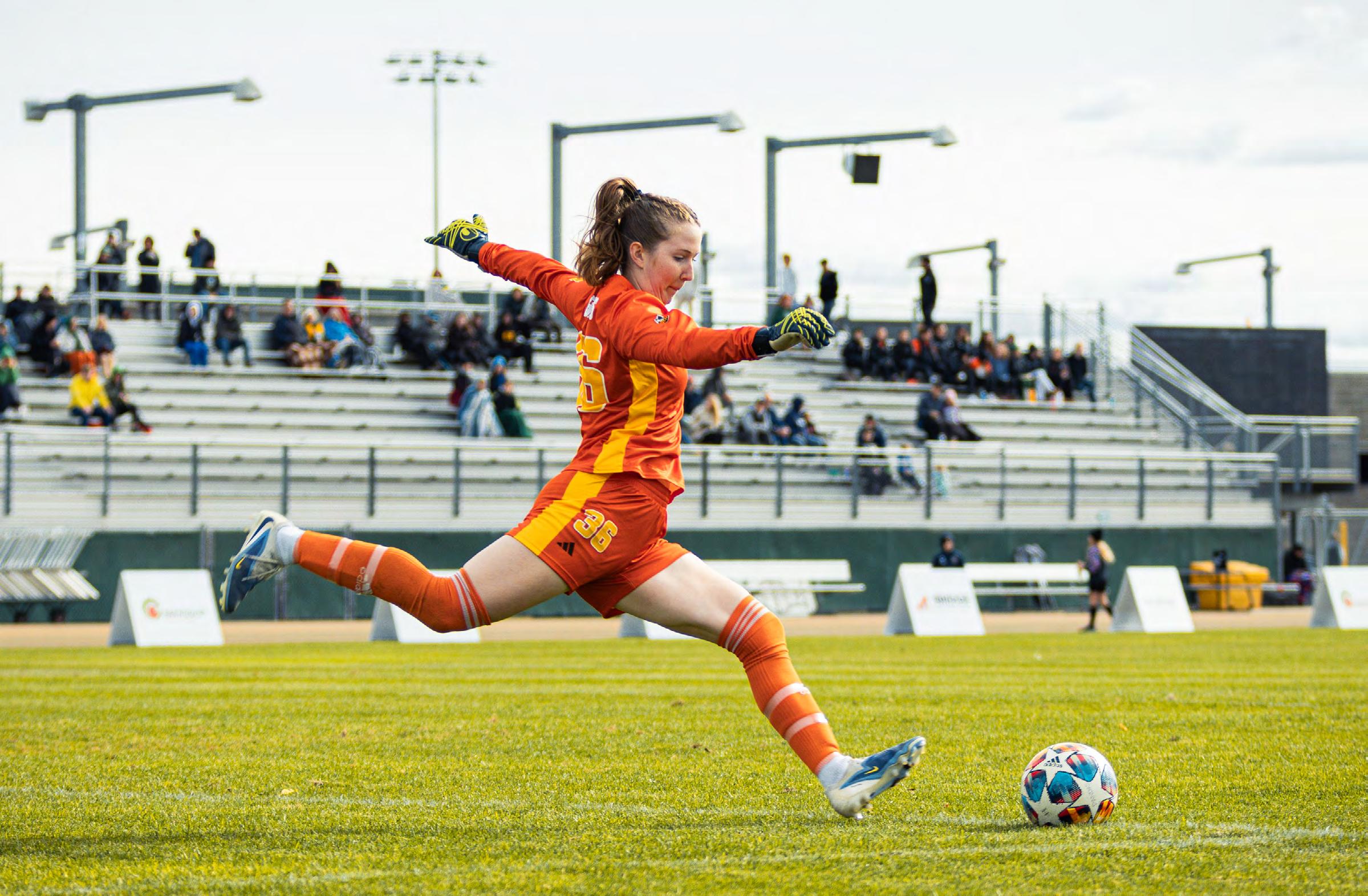

PHOTOS PROVIDED BY GRAEME KELLY
Bisons football picks up a home win
Bisons edge out the Thunderbirds 35-31 in a thrilling home victory
Abdul-Jalilu Ahmed, staff
The Bisons football team secured a tight 35-31 victory over the University of British Columbia Thunderbirds on Saturday, Oct. 4 at the Princess Auto Stadium.
The game opened with a strong first quarter for the Bisons. A team safety at 13:28 gave the Bisons an early 2-0 lead. Bisons quarterback Jackson Tachinski followed up with a one-yard run at 7:52 to make it 9-0. The Thunderbirds got on the board with a 35-yard field goal from Alexander Hillyard at 4:27, cutting the lead to 9-3. Another Bisons safety at 0:23 of the quarter pushed the score to 11-3.
The Bisons continued to dominate in the second quarter. Running back Noah Anderson made a seven-yard run at 13:42 to extend the Bisons’ advantage to 18-3. Tachinski made a two-yard run at 6:39 for the Bisons, widening the score to 25-3. At the 2:31 mark, kicker Maya Turner scored a 28-yard field goal to give the Bisons a 28-3 lead at halftime.
The Thunderbirds mounted a comeback in the second half. Toluwalope Ayedegbe made a two-yard run at 10:29 in the third quarter to reduce the deficit to 28:10. Shemar McBean connected to a oneyard from Drew Viotto at 4:41 for the Thunderbirds, bringing the score to 28-17.
At the 13:25 mark of the fourth quarter, Thunderbirds’ Trey Montour caught an 11-yard pass from Viotto to close the gap to 28-24. Montour connected to a 15-yard pass from Viotto at 5:55 to give the Thunderbirds a 31-28 lead. The Bisons bounced back as Tachinski made a two-yard run at 2:03 to record a 35-31 win for the Bisons.
Bisons football head coach Stan Pierre credited his players for the victory, but urged them to stay fully focused in high-stakes games like this one. “The message is that they have to be assignment-sound and do what they’re told on every play for the entire game,” said Pierre. “At this level, to lose focus in a game like that, when it’s a headto-head opponent that we’ve played twice, is really inexcusable […] I give them credit, they came out like gangbusters, but we did a lot of bad things in that second half.”
He detailed the events of the second half that shifted momentum away from the team. “The pass rush was one. We had lots of times […] we had brought pressure and it got home and we didn’t make
the tackle. They extended plays, and they have some really skilled guys back there. When you extend plays, it becomes really difficult. It’s tough to say totally without seeing the film […] And then we had some busts. We also were short-handed, and we don’t have the type of depth to go six or seven or eight guys deep in the secondary and expect not to have some hiccups with guys who haven’t played before. So that was also part of it, too. My guess is it’s going to be a combination of those things when I look at it.”
Tachinski acknowledged that while the team struggled to execute certain aspects of their game plan, they remained resilient despite the Thunderbirds’ second half performance. “I didn’t see much [giving] up. Obviously, they were scoring a lot of points, and they were on a roll, but I still think our guys were into the game. We still wanted to win, we still had a fire in our bellies. I don’t think much changed, but I just think we weren’t executing to our best ability on the field. We were missing assignment here, assignment there, and it’s a trickle-down effect.”
He expressed confidence that his teammates will rise to the occasion when needed and emphasized his belief in the coaching staff. “Our team is that good, that I believe in them, that I can put my body on the line and I know they’re going to step up. [I have] belief in that team that I have, belief in my teammates, belief in my coaches. I don’t really have another option than to play injured and to try to be on the field with them.”
Defensive back Daniel Conway highlighted the significance of the victory for the team. “Now we’re three and three. We’re up and we’re looking pretty good going to the biweek. If things didn’t go our way, and they looked like they weren’t going our way for a bit, we’d be in a [much] tougher position, but it feels good.”
In the league standings, the Bisons football team has six points, with three wins and three losses from six games.
The Bisons football team will host the Calgary Dinos on Saturday, Oct. 18, 1 p.m. CT, at the Princess Auto Stadium.



PHOTOS PROVIDED BY ZACHARY PETERS
